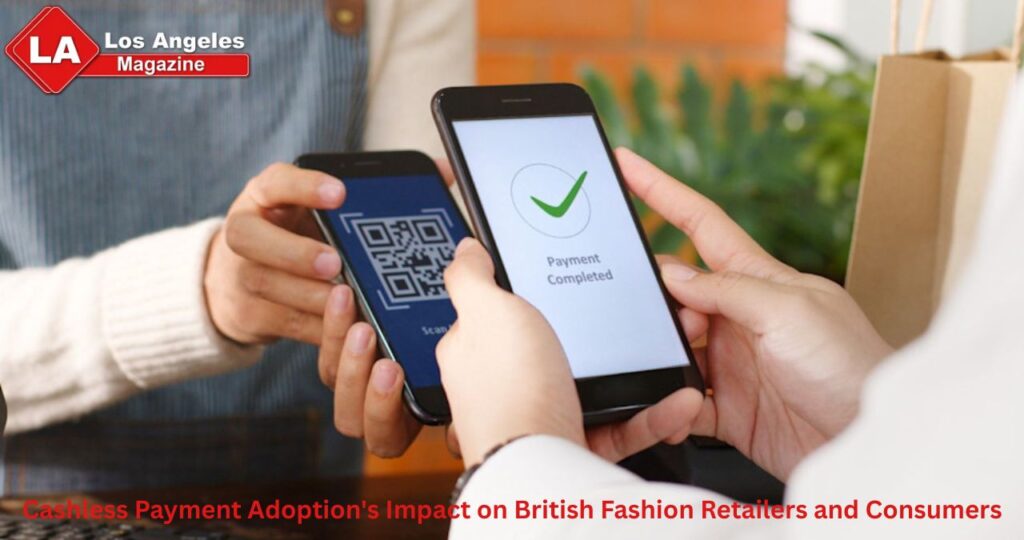The move toward a cashless society has greatly changed the retail scene in the United Kingdom; the fashion sector has been among the most obviously affected industries. British fashion stores have reacted fast to fit these changing expectations as customers increasingly choose card, cellphone, and contactless payments over conventional cash transactions. This change has affected not only how companies run but also how people shop, engage with, and experience fashion.
Changing Consumer Behavior
British consumers have grown used to speed and ease in their buying encounters. Cashless payments fit exactly with these likes. Whether in luxury boutiques or high-street businesses, consumers are now more inclined to expect quick and frictionless payment experiences. The drop in currency use during the COVID-19 epidemic has hastened this trend since it drove people to use contactless and digital payment systems for efficiency and hygiene concerns. Unsurprisingly, this had led to more people researching how to convert SOL to USD.
Cashless payments let consumers spend less time at the till, hence allowing faster checkouts and lowering line sizes. This ease has a psychological impact as well—consumers are typically more ready to make impulse buys when the physical step of handing over money is gone. For fashion stores, this might lead to more average transaction prices and larger basket sizes.
Retailers’ Operational Advantages
For British fashion stores, abandoning cash has several operational benefits. Dealing with money calls for extra time, resources, and security precautions. Cash transactions provide logistical complexity from counting tills and making bank deposits to theft prevention and float deficit management. Going cashless helps stores simplify their processes, cut human error, and save on management expenses.
Cashless payments also provide quicker sales reconciliation and better financial correctness. This enables businesses to monitor sales performance in real time, which is vital for consumer insights and inventory control. Many fashion stores now offer faster restocking choices and improved inventory control by using integrated technologies that instantly update stock levels as sales take place.
Going cashless also helps to discourage in-store criminality. Less actual cash on the premises lowers the danger of theft or robbery, hence improving the general security of staff members as well as consumers.
Improved Client Experience
The fashion shopping experience is about brand perception, ambiance, and service as much as it is about buying goods. Adopting cashless payments lets stores improve the consumer experience by emphasising efficiency and individualization.
Quick payments provide salespeople more time to interact with consumers, provide style advice, and build relationships. Some shops have included mobile checkouts and self-service kiosks, letting consumers shop and buy without standing in conventional lines. In city retail settings, where time-saving is important, this is especially enticing.
Furthermore, many consumers now see cashless payments as a modern need. Having grown up in a digital world, younger generations—especially Gen Z and millennials—often feel more at ease with non-cash approaches. For these consumers, the use of cashless payments shows a firm’s modernity and technical flexibility, hence boosting brand reputation and customer loyalty.
Issues and Thoughts
Though it has advantages, becoming cashless presents difficulties. One significant issue is the possibility of digital isolation. Although most British consumers are fine with cashless policies, certain groups—including older persons, low-income individuals, and those without access to banking services—may still depend significantly on cash. Fashion stores have to think about diversity and accessibility if they are to avoid alienating some of their consumers as they move to cashless systems.
Relying on digital infrastructure is another concern. Power outages, hardware issues, or network outages can disrupt payment processing and cause missed sales or unhappy consumers. Fashion stores have to make sure there are backup systems and customer service plans ready to deal with such disturbances.
Increasing issues are also related to privacy and data security. Customers want their financial and personal data to be managed sensibly. Retailers have to follow data protection rules and earn confidence with open policies as cashless payments create more data.
The Larger Effect on Fashion Culture
Beyond transactions, cashless adoption is shaping more general patterns in British fashion. Digital payment systems’ growing use has helped to promote immersive fashion events, in-person markets, and pop-up stores. Often relying on portable cashless technologies, these events allow companies to interact with consumers in innovative, creative ways, free of cash management system requirements.
Streamlined cashless transactions are also helping the fashion resale market, which is already thriving in the UK. Many consumers who purchase or sell second-hand clothes at events or online choose non-cash alternatives, supporting sustainability and reducing cost in the fashion ecosystem.
Conclusion
The future of cashless payments in British fashion retail seems only to deepen. The border between shopping online and in-store will blur even further as technology develops. Digital payments in stores are being more and more integrated with loyalty programs, tailored marketing, and omnichannel approaches, therefore enabling retailers to provide a more consistent brand experience across channels.
In the end, the” growing use of cashless payments has opened a new era for British fashion stores and consumers. While consumers appreciate speed, convenience, and a more tailored experience, retailers gain from more efficiency, improved data, and stronger security. Although guaranteeing inclusivity and resilience still presents difficulties, the path is obvious: in the changing fashion sector, cashless is fast becoming the new standard.



